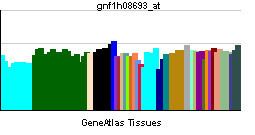Entrez 57506 | Ensembl ENSG00000088888 | |
 | ||
External IDs MGI: 2444773 HomoloGene: 17004 GeneCards: MAVS | ||
Mitochondrial antiviral-signaling protein (MAVS) is a protein that in humans is encoded by the MAVS gene. The protein is also known by the names VISA (virus-induced signaling adapter), IPS-1 and Cardif. Aggregated MAVS forms protease resistant prion-like aggregates that activate IRF3 dimerization.
Function
Double-stranded RNA viruses are recognized in a cell type-dependent manner by the transmembrane receptor TLR3 or by the cytoplasmic RNA helicases MDA5 and RIGI. These interactions initiate signaling pathways that differ in their initial steps but converge in the activation of the protein kinases IKKA (CHUK) and IKKB (IKBKB; MIM 603258), which activate NFKB, or TBK1 and IKBKE (IKBKE), which activate IRF3. Activated IRF3 and NFKB induce transcription of IFNβ (IFNB1). For the TLR3 pathway, the intermediary molecule before the pathways converge is the cytoplasmic protein TRIF (TICAM1). For RIGI, the intermediary protein is mitochondria-bound MAVS.
